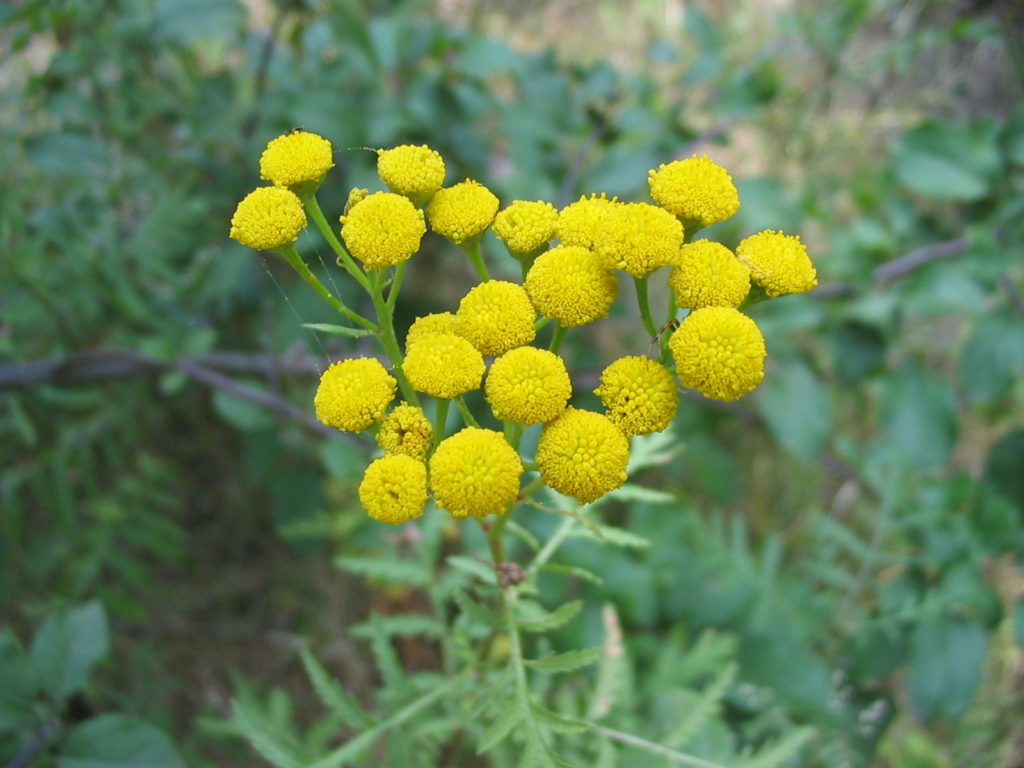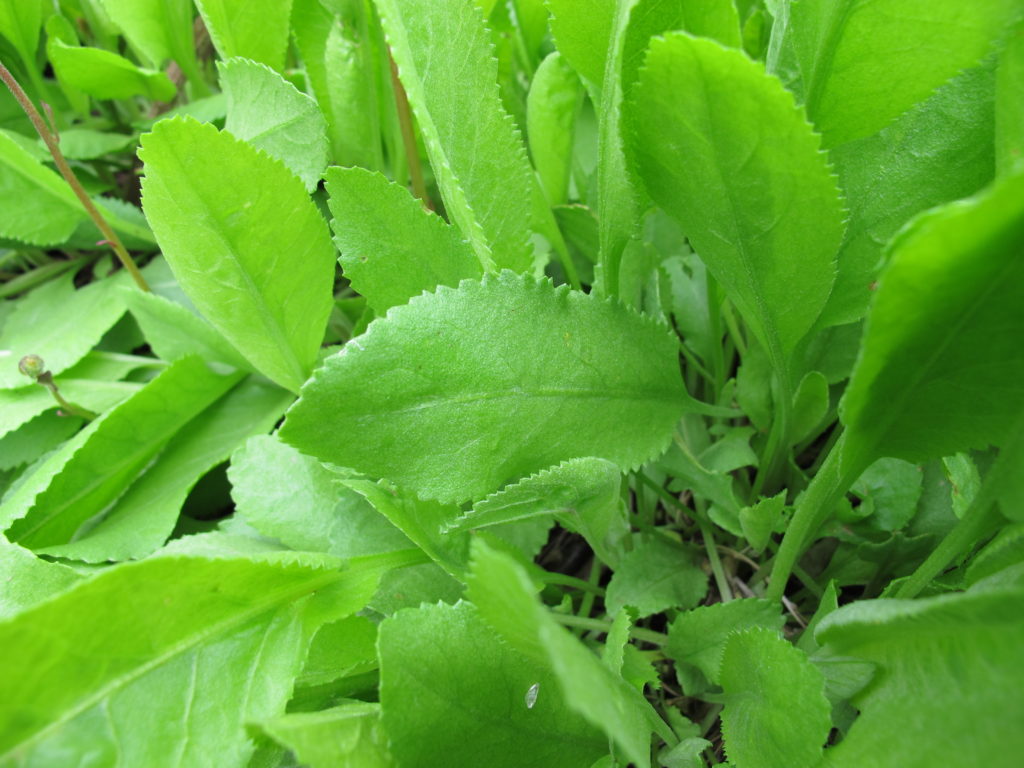Costmary is a perennial herb sometimes called mint geranium. But costmary is neither mint nor geranium although its leaves have a spearmint flavor. Costmary makes an attractive, fragrant hedge in the herb garden or perennial border. Its leaves can be used fresh or dried to flavor green and fruit salads and make tea.
Here is your complete guide to growing costmary.
Where to plant costmary
- Best location: Grow costmary in full sun to partial shade; avoid full shade. Costmary will not flower without sun.
- Soil preparation: Plant costmary in humus-rich, well-drained soil; costmary prefers a soil pH of 6.0 to 6.7.
Related articles:
- How to Grow Herbs
- How to Start an Herb Garden
- Best Herbs for Container Growing
- Herbs for Cool Season Growing
- Grow 20 Herbs for Cooking

When to plant costmary
- Seed starting indoors: Start costmary indoors in spring. Seeds germinate in 14 to 21 days.
- Transplanting to the garden: Transplant costmary to the garden mid-to-late spring.
- Outdoor planting time: Start costmary seed outdoors after the last spring frost or set out rhizome divisions.
How to plant costmary
- Planting depth: Sow seeds ¼ to ½ inch deep.
- Spacing: Space costmary plants 2 to 3 feet apart.
- How much to plant: Grow 1 costmary plant for culinary use. Use costmary in small quantities; it can be overpowering.
Costmary companion planting
- Companion planting: Costmary is an aggressive grower; it has a rhizome root system that can crowd out other plants growing nearby.
Watering and feeding costmary
- Watering: Grow costmary in soil that is kept evenly moist.
- Feeding: Plant costmary in loamy, humus-rich soil. No additional fertilizer is needed. Add aged compost to the planting bed ahead of planting.
Costmary care
- Care: Costmary can look leggy if not clipped back. : For more foliage, discourage flowering. When the plant flowers, cut costmary back to 3 or 4 inches above the soil; it will fill back out in a few weeks. Divide plants every 3 years.
Container growing costmary
- Container growing: Costmary can be grown in a pot 12 inches wide and deep.
- Winter growing: Costmary will die back to the ground in cold winter regions; it will re-sprout in spring. Grow plants indoors in containers during winter.
Costmary pests and diseases
- Pests and diseases: Costmary is usually not bothered by pests or diseases.

How to harvest costmary
- When to harvest: Harvest young costmary leaves as needed. The oils in the leaves are strongest before flowering.
- How to harvest: Clip leaves with scissors.
Costmary in the kitchen
- Flavor and aroma: Costmary leaves have a spearmint flavor.
- Leaves: Leaves can be used fresh or dried. Add young leaves to leafy green salads or fruit salads.
- Teas: Leaves can be used to flavor teas and
Preserving and storing costmary
- Refrigeration: Costmary leaves will keep a few days in the refrigerator; wrap leaves in a damp paper towel and place them in a perforated plastic bag.
- Drying: Leaves can be dried on a screen or tray set in a warm spot out of direct sunlight.
- Storing: Store dried leaves in an airtight container.
Costmary propagation
- Seed: Costmary is commonly not grown from seed; it can be difficult to germinate. Stratify seeds before sowing by placing them in the refrigerator for a few weeks.
- Division: Costmary plants can be divided in spring or autumn. Replant divisions at the same depth they were growing.
- Cuttings: Grow costmary from young stem cuttings; dip cut ends in rooting hormone and plant in an organic potting mix. Root cuttings in spring or fall.
Get to know costmary
- Botanical name and family: Tanacetum balsamita is a member of the Asteraceae—daisy family.
- Origin: Asia
- Type of plant: Costmary is a herbaceous perennial.
- Growing season: Summer
- Growing zones: Costmary grows best in Zones 4 to 8.
- Hardiness: Costmary dies back in cold winter regions; it re-sprouts the following spring.
- Plant form and size: Costmary is a low bushy plant 12 to 24 inches tall and wide. It can be used as a low hedge in the herb garden or perennial border.
- Flowers: Costmary has clusters of ½ inch daisy-like flowers; flowers have white petals with yellow centers. They are borne on erect stems.
- Bloom time: Costmary blooms in spring and summer.
- Leaves: Costmary has bright gray-green oval, serrated leaves to 10 inches long. Leaves have toothed edges and silvery hairs.
Also of interest:
- Anise
- Anise Hyssop
- Arugula
- Basil
- Bay
- Bee Balm
- Borage
- Calendula
- Caraway
- Catnip
- Chamomile
- Chervil
- Chives
- Cilantro-Coriander
- Clary
- Costmary
- Cress
- Dill
- Fennel, Sweet
- Horseradish
- Hyssop
- Lavender
- Lemon Balm
- Lemon Verbena
- Lovage
- Marjoram
- Mint
- Nasturtium
- Oregano
- Parsley
- Perilla
- Rosemary
- Sage
- Salad Burnet
- Savory
- Scented Geranium
- Shiso
- Sorrel
- Stevia
- Sweet Cicely
- Tarragon
- Thyme
Related articles:
Planning the Home Fruit Garden
Garden Planning Books at Amazon:
- Vegetable Garden Almanac & Planner
- Kitchen Garden Grower’s Guide Vegetable Encyclopedia
- Vegetable Garden Grower’s Guide
- Tomato Grower’s Answer Book















